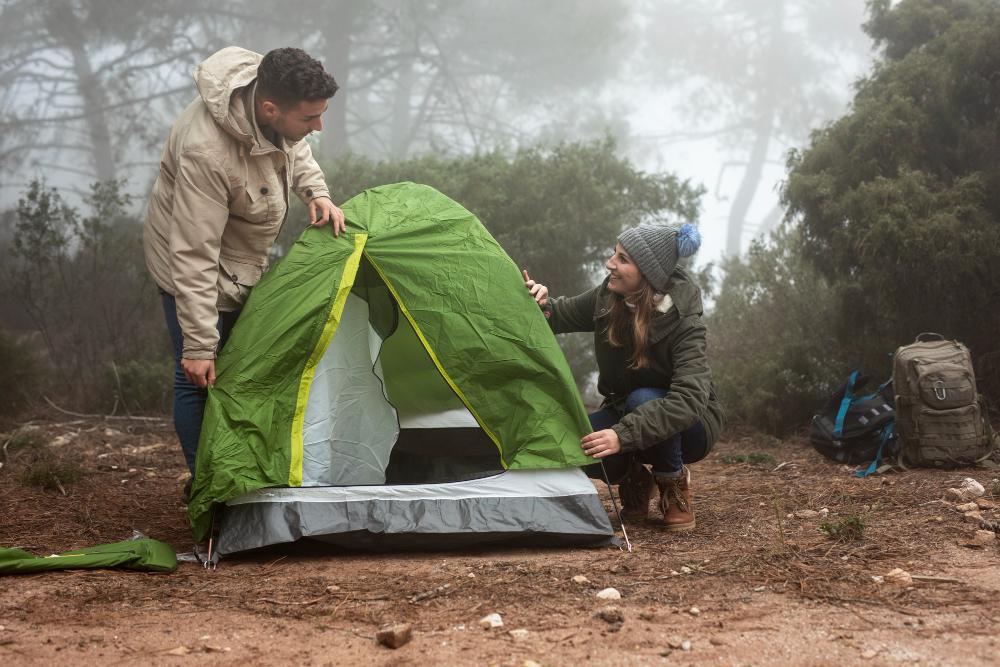Waterproof Camping Gear in the Philippines You Need for Rainy Season

The Philippines offers breathtaking destinations, but its extended rainy season means a sudden, intense tropical downpour is always a possibility. For campers, this demands fully reliable waterproof protection. Your success—and comfort—relies on a "waterproof hierarchy": keeping yourself, your sleep system, and your essentials dry with the right camping gear in the Philippines.
Shelter: The Foundation of Defense
Your tent is your primary fortress against the elements. If your shelter fails, the rest of your trip will quickly follow suit.
The Tent: Hydrostatic Head and Seams
The Hydrostatic Head (HH) rating measures fabric water resistance. Aim for an HH rating of 2,000mm or higher for reliable protection against Philippine rain, which often falls hard and fast. Crucially, look for taped or sealed seams on the rainfly and the floor, as unsealed stitching will wick water inward almost immediately. Also, ensure the tent has a full-coverage rainfly that extends close to the ground, not just a small cap over the top.
Ground Defense (Footprint/Tarp)
Water seeping up through the floor is the most common failure point for camping gear in the Philippines. To prevent this, a waterproof footprint or tarp beneath the tent is essential. The ground defense should be slightly smaller than the tent's floor area to prevent water collection between the layers after runoff.
Emergency Shelter (The Tarp)
A large, lightweight, dedicated waterproof tarp is the most versatile piece of rainy-season gear. It's not a substitute for a tent, but it allows you to create a large, dry communal area, a sheltered kitchen, or a gear staging space outside the tent. This extra layer is crucial for maintaining morale and managing gear without bringing mud and water inside your main shelter.
Sleep System: Staying Warm and Dry
If your sleeping bag gets wet, you risk hypothermia, making protection for your sleep system non-negotiable.
Dry Bag Storage
All items sensitive to water—especially sleeping bags, pillows, and clothing—must be stored in dry bags. These roll-top sacks create an airtight, watertight seal. Do not rely on trash bags; use dedicated dry bags to keep your sleep system completely isolated from any moisture that penetrates the tent.
Sleeping Pads
When choosing a sleeping pad, focus on its inherent waterproof nature. Both closed-cell foam pads and modern inflatable pads are made from non-absorbent materials, meaning they will not wick up water from the floor. They also provide a critical layer of insulation, lifting you off the cold, damp ground.
Synthetic vs. Down
For camping gear in the Philippines, synthetic-fill sleeping bags are often the practical winner over down. While down is lighter, it completely loses its insulating properties when damp. Synthetic fill retains some warmth even when wet, making it the safer, more reliable choice in a damp tropical climate.
Personal Gear and Protection
Keeping yourself dry during a hike or while setting up camp is key to preventing discomfort and illness.
Rainwear (Shells)
Do not confuse water-resistant with waterproof. For the Philippines, you need fully waterproof jackets and pants (hard shells) with sealed seams. Because humidity is always high, look for features like pit zips and mesh linings that allow the jacket to "breathe." Ventilation is crucial for preventing the clammy, swampy feeling that comes from trapping high humidity inside the shell.
Footwear
Waterproof hiking boots with a reliable membrane are essential for managing muddy trails. More importantly, pair them with waterproof gaiters. Gaiters cover the ankle and lower calf, sealing the gap between the boot and your pants, which prevents water, mud, and debris from dropping directly into your boot from the top.
Electronics and Essentials
Use small, dedicated dry sacks or waterproof cases for your phone, keys, GPS unit, and, most importantly, your first aid kit. A wet first aid kit is useless, and a drowned phone can be a safety hazard if you need to call for help.
Site Selection and Camp Management
Even the best waterproof camping gear in the Philippines can fail if you set up in the wrong spot or manage your camp poorly during a heavy rain.
Location is Everything
Never pitch your tent in a depression, trench, or at the bottom of a slope, even if it looks flat. These areas are natural drainage channels and will turn into pools as soon as the rain starts. Instead, look for ground that is naturally slightly elevated, level, and well-drained.
Trenching and Drainage
In persistent rain, you may need to dig a small, shallow trench around the tent's footprint to divert water away from the base. The trench should direct water to lower ground, ensuring it doesn't collect near the tent. This simple act of camp maintenance is often the difference between a dry night and a miserable one.
Mud and Moisture Control
Establish a designated "wet zone" just outside the tent entrance for removing muddy shoes and rain jackets. Never bring wet items inside the sleeping area. Wipe down the inside of the tent walls and rainfly (where condensation forms) before you settle in for the night to prevent moisture from dripping onto your sleep system.
Key Takeaway
Successful rainy season camping relies on investing in a full-coverage tent with taped seams and adopting a multi-layered approach: protecting your shelter from the ground up, storing all sensitive items in dry bags, and wearing fully waterproof outer layers. However, this gear must be supported by smart camp management—choosing an elevated site and actively managing drainage to ensure a dry, safe experience in the Philippines' challenging wet season.
- AI
- Vitamins
- Health
- Admin/office jobs
- News
- Art
- Causes
- Crafts
- Dance
- Drinks
- Film
- Fitness
- Food
- Jocuri
- Gardening
- Health
- Home
- Literature
- Music
- Networking
- Alte
- Party
- Religion
- Shopping
- Sports
- Theater
- Wellness


